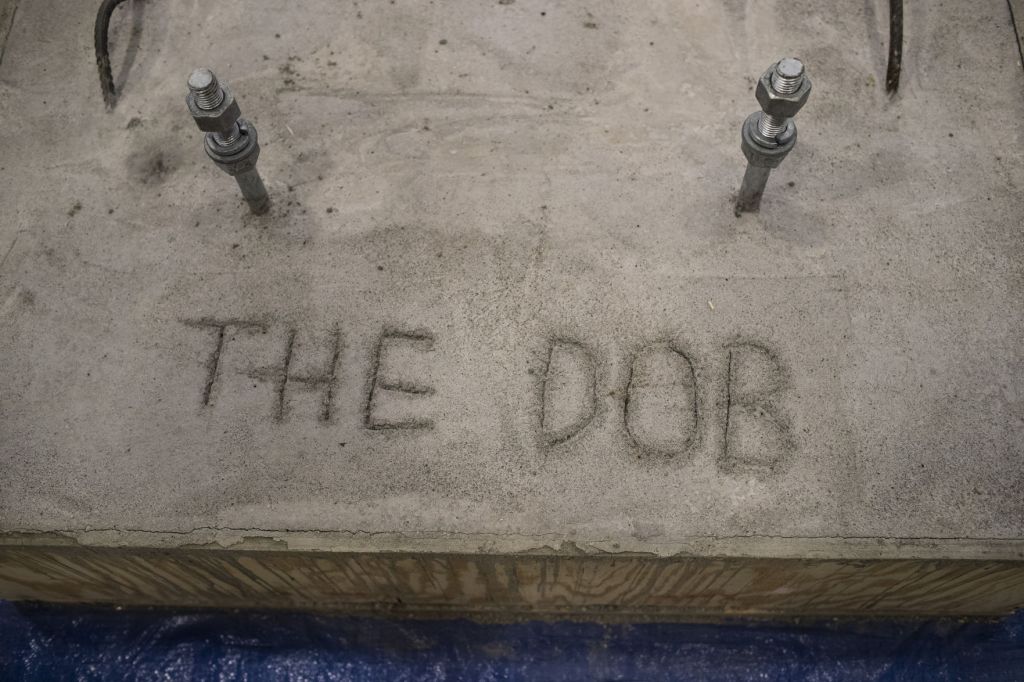WKU engineering students contribute to radio telescope project
Published 6:00 pm Friday, December 7, 2018

- A test concrete slab to mount the telescope to inscribed with the telescope's nickname, "The Dob", on Friday, December 7, 2018, at the Engineering and Biological Sciences at WKU. The nickname is due to the telescope design using a Dobsonian mount rather than equatorial. (Austin Anthony/photo@bgdailynews.com)
When engineering students set out to design a new radio telescope at Western Kentucky University this year, they initially thought everything would come together seamlessly.
“That definitely is not the case,” said Russell Wilson, a senior from Eubank, who’s one of several School of Engineering and Applied Sciences students contributing to the project. “It turned out to be way more interconnected than we thought it would be.”
Learning to collaborate and tackle large-scale issues is one of the major lessons the students have learned this year as they’ve worked to help convert an old home satellite receiving system with a 10-foot dish into a working radio telescope.
The students contributing to the project include Wilson, Abdulatef Alnesafi, Luke Goodaker, Dylan Lacefield, Samuel Rapini, Richard Stevens and Grant Taylor. Joel Lenoir, a professor in the School of Engineering and Applied Sciences, is the group’s faculty adviser.
Radio telescopes are instruments that use a special antenna and radio receiver to receive radio waves from astronomical sources in the sky. Once completed, the telescope will enable observers to track the sun and moon, planets, the remnants of supernovas and galaxies.
“The intention is to use it primarily for education. So students will be using the telescope out in the field to learn how things move in the sky and how to observe radio sources,” said Steven Gibson, an associate professor in the Department of Physics and Astronomy.
The project is a joint effort between the Department of Physics and Astronomy and the School of Engineering and Applied Sciences. It all started when a WKU physics student Stacy Hicks acquired the dish from neighbors in rural Kentucky, Gibson said.
WKU Physics and Astronomy students and faculty moved the dish to the Bell Observatory along Russellville Road in 2016 to begin modifying it, according to Gibson. However, once it became clear a major mechanical redesign was needed to allow the telescope to track objects across the sky, the department sought out engineers for help.
That’s where the students come in as they work to make a new Dobsonian-style mount system a reality. They’ve nicknamed their mount “The Dob.”
Funding for the project is made possible through the WKU Research and Creative Activities Program, the Gatton Academy Research Supplies Grant and the WKU School of Engineering and Applied Sciences Industrial Partnership Innovation Fund, according to Gibson.
With luck, it won’t be long before students can study the stars through a new lens.
“We aim to have the telescope ready for testing and deployment sometime in the next six months,” Gibson wrote in a follow-up email.
Doug Harper, a physics professor assisting with computer interfacing and control on the project, said it’s turned into something students across disciplines can contribute to and benefit from.
“It’s turning into a good learning experience for a broad spectrum of students,” he said.




